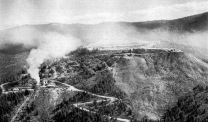Latest KCIC Report Finds Decline in Mesothelioma Lawsuits
Legislation & LitigationWritten by Tim Povtak | Edited By Walter Pacheco

The number of mesothelioma lawsuits filed in 2020 dropped significantly, while cases involving lung cancer continued to increase, according to a recent study reflecting the changing face of asbestos litigation.
KCIC, a well-respected consulting firm in Washington, D.C., that manages asbestos product liabilities, released its industry report Thursday.
Asbestos legal filings, covering both malignant and nonmalignant disease in the United States, dropped 11% from 2019 to 2020, from 4,137 to 3,685 cases, respectively.
Most prominently, there was a 9% increase in asbestos-related lung cancer filings, but a 14% decrease in cases for malignant mesothelioma, which is caused almost exclusively by asbestos exposure.
Mesothelioma cancer accounted for almost 51% of all asbestos litigation. Lung cancer accounted for 40% of the asbestos filings in 2020, compared to 27% and 33% of the filings in 2018 and 2019, respectively.
Although the decrease in total filings could partially be attributed to the global pandemic that closed federal and state courts at various times in 2020, there has been an annual decline in asbestos filings in each of the past three years.
Asbestos Legal Filings Continue to Decline
Asbestos is a naturally occurring mineral that was once used ubiquitously in the U.S., particularly for commercial and residential construction. Tighter governmental regulations in recent decades, however, have dramatically reduced its use.
There was an all-time high of 2,124 mesothelioma lawsuits filed in 2017, according to KCIC.
The lengthy latency period of 30-60 years between first exposure and cancer diagnosis has prevented mesothelioma incidence and the number of lawsuits from declining faster.
For lawsuits filed by attorneys from 2014 to 2020, the average date of first asbestos exposure ranged from January 1959 to December 1960, according to KCIC. For perspective, the largest amount of raw asbestos imported into the U.S. didn’t come until 1973, according to the U.S. Geological Survey Mineral Commodity Summaries report.
Asbestos-Contaminated Talc Filings Grow
There also has been a significant increase in filings alleging nonoccupational asbestos exposure, which once accounted for only a small percentage of cases.
An increase of nonoccupational filings in the past couple of years has been sparked by asbestos-contaminated talc. In the last two years, nonoccupational exposure has jumped from 33% to 45% of the cases for men and from 46% to 57% for women.
The first lawsuit filed involving asbestos in talc and mesothelioma cancer was in 2016. There were more than 500 of those cases involving mesothelioma or lung cancer in 2020.
A much larger number of cases alleging talc caused ovarian cancer were not part of this recent report.
Also slowing the decline of asbestos litigation in recent years has been the increased willingness of those diagnosed with mesothelioma to file lawsuits.
In the most recent three-year period of the KCIC report, using cancer data from the U.S. Centers of Disease Control, the propensity to sue jumped from 65.8% to 70.4% for those diagnosed with mesothelioma.
The youngest and oldest asbestos-related plaintiffs were 26 and 99 years of age, respectively.
Asbestos Consistencies Remain
Despite the decline in legal filings, some consistencies with asbestos remain, according to the study.
Madison County, Illinois, remains the overwhelming choice of where to file an asbestos claim, with almost three times more cases than any other jurisdiction. St. Clair County, Illinois, had the second-most cases and a 12.5% increase from 2019.
The average number of defendants in 2020 asbestos cases was 65. More than 11,000 companies were named in asbestos complaints that year, an example of how extensive the use of the toxic mineral once was.
Men continue to dominate the asbestos litigation field, reaching 87% of the plaintiffs in 2020. Women accounted for just 7% of the lung cancer cases and 18% of the mesothelioma cases.
Although asbestos litigation is the longest-running mass tort in American history, there is no national registry. KCIC, through its claims and administration practice, processes at least 90% of all asbestos lawsuits, according to its report.






